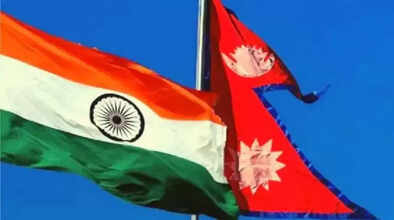Nepal Fact: Are you preparing for competitive exams? Then you must know these facts about neighboring country Nepal..

Nepal Fact: If you are preparing for competitive exams, then it is very important to know the basic facts related to the neighboring country, Nepal. Nepal is currently in the news due to political instability and youth movements (Gen-Z). Nepal's history, culture, and geography are very important. These facts related to Nepal will strengthen both your GK and current affairs. Being a neighboring country, Nepal is not only an important part of India's foreign policy, but understanding its culture and geography is also important to understand the picture of Asian politics.
Let us know the important things related to Nepal, which can be asked as questions in any competitive exam.
Capital and administrative structure
The capital of Nepal is Kathmandu, which is considered the political, cultural, and economic center of the country. Kathmandu is known for its historical temples and UNESCO World Heritage Sites. Talking about the administrative structure, Nepal is divided into 7 provinces and 77 districts. This federal structure was implemented after the 2015 Constitution.
Population and Geography
According to the data of the World Health Organization, the population of Nepal was around 2.96 crores in 2023, and it is estimated that by 2050, it will increase to about 3.46 crores. Geographically, Nepal is divided into three parts, which include the Himalayan region in the north, the hilly area in the middle, and the fertile Terai region in the south.
Deep relationship with India
Nepal's specialty is that it shares an open border with India. This border is connected to five states of India: Sikkim, West Bengal, Bihar, Uttar Pradesh, and Uttarakhand. The cultural, family, and religious ties between the two countries are very deep, due to which there are not many restrictions on movement.
World Heritage and Center of Faith
Nepal has many important natural and cultural heritage sites. Sagarmatha National Park and Chitwan National Park are globally recognized natural heritage sites. If we talk about cultural heritage, then Kathmandu, Lalitpur (Patan), and Bhaktapur's Darbar Chowk, Swayambhunath (Monkey Temple), Pashupatinath Temple, Boudhanath Stupa, and most importantly Lumbini, the birthplace of Lord Buddha, are the centers of devotion in the whole world.
Land of Buddha and Everest
Nepal's identity always remains for two special reasons, they are Lumbini and Mount Everest. It is said that Gautam Buddha was born in Lumbini in 623 BC. Ashoka Pillar is still present there. From a religious point of view, this place is a holy pilgrimage for Buddhist followers. Mount Everest, which is 8,848 meters high, is the highest peak in the world. It is the dream of every mountaineer to conquer it, while the journey to Everest Base Camp also attracts trekkers from all over the world.
Unique flag
The flag of Nepal is also unique for its design. It is the only non-rectangular national flag in the world. The red colour symbolises its courage, the blue border symbolises peace and the sun and moon carved in it represent the cultural heritage of Nepal.
Disclaimer: This content has been sourced and edited from TV9. While we have made modifications for clarity and presentation, the original content belongs to its respective authors and website. We do not claim ownership of the content.

